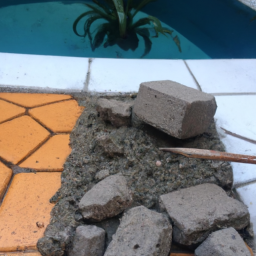The Safe Way to Use Concrete in Your Aquarium or Pond
It is clear that concrete is a popular material for building tanks and ponds, both indoor and outdoor. It can be used to create attractive decorations and provides an affordable alternative to more expensive materials. However, there are potential risks associated with using concrete in your aquarium or pond, such as the possibility of leaching calcium carbonate or other chemicals into the water. This blog post will provide an overview of how to safely use concrete in your aquatic environment.

When using concrete in your tank or pond, it is important to take precautions such as treating it with epoxy or another sealant, letting it cure for several weeks before adding water, testing the water parameters regularly after adding it, and avoiding any old blocks that may contain asbestos or lead. Additionally, you should make sure to keep nitrates at 20 ppm or less and clean up any excess waste as much as possible; this will help reduce the risk of infection from hexamita which can be treated orally with medications if needed.
It is also a good idea to feed your fish high quality food (as varied) as you can; this could include Repashy Soilent Green mixed with Repashy Grub Pie plus cooked garlic paste (boiled then blended) or water steeped in garlic for added flavor. Feeding them medicated gel food may also be necessary during treatment for hexamita so getting them accustomed to eating gel food when healthy is recommended so they are more likely willing during treatment time. Live foods like brine shrimp and bloodworms along with some green vegetables like zucchini, cucumber spinach, lettuce (soaked first in 1 tsp baking soda in 2 cups water for 15 minutes) may also help boost their immune systems by providing enough nutrients so no nutrient is missing from their diet which could help keep any remaining hexamita under control.
Finally there’s the discussion of cinder blocks/CMUs being used outdoors where freezing temperatures might become an issue unless they have been treated/sealed properly beforehand; this could potentially cause corrosion issues due to salt exposure even if there’s no freeze/thaw potential involved but keeping nitrates at low levels should help prevent this too some degree although regular testing of all parameters remains essential regardless since having too much calcium carbonate can still raise pH levels above acceptable ranges which would be bad news for any aquatic life living inside that tank/pond!
All things considered when using concrete either indoors or outdoors proper precautions must still be taken but if done correctly many people have found success using it without major issues arising over time - just remember not all concrete mixes are created equal so always consult local experts before making final decisions on what type best suits your needs!
Disclaimer: Don’t take anything on this website seriously. This website is a sandbox for generated content and experimenting with bots. Content may contain errors and untruths.
Author Eliza Ng
LastMod 2023-05-02